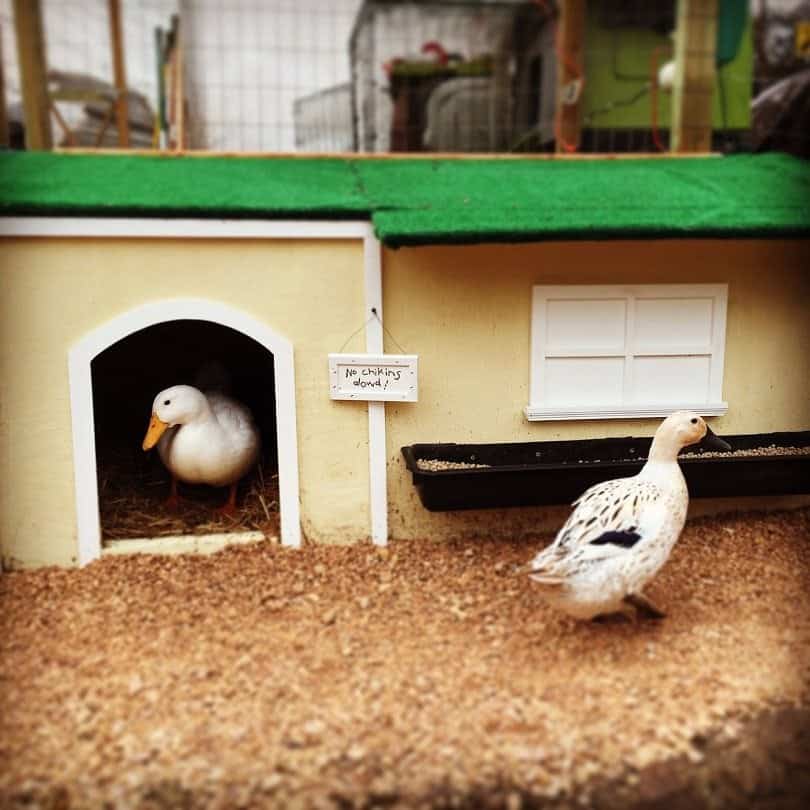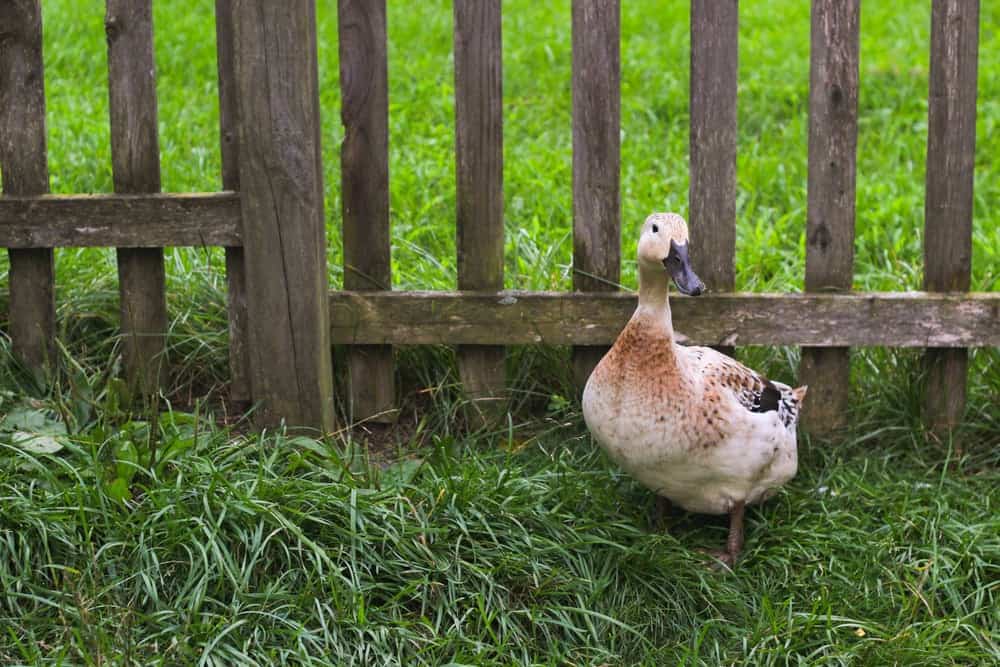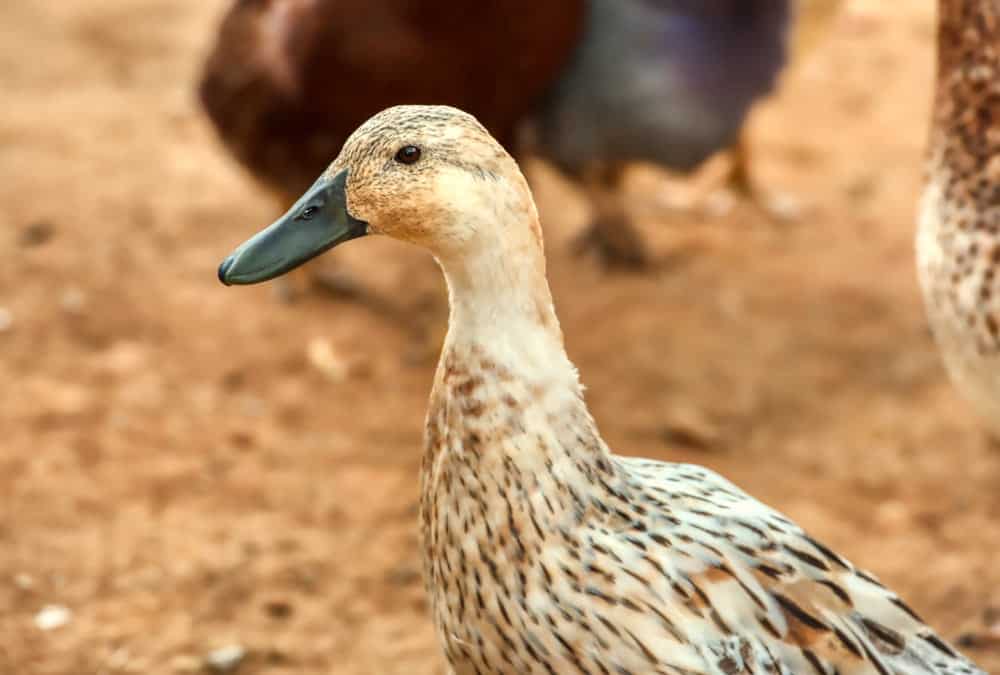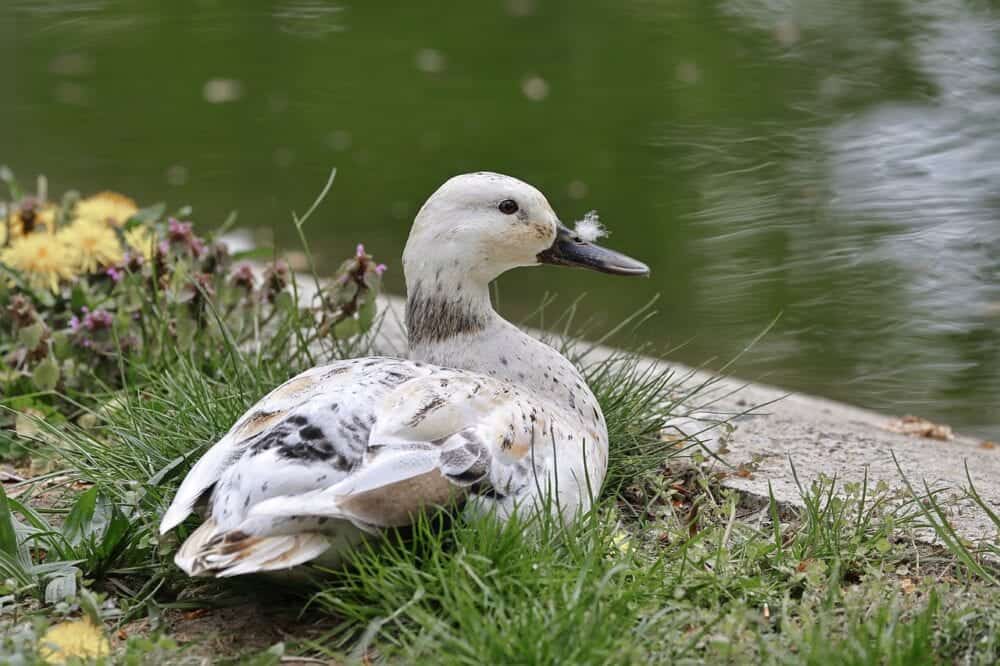If you like duck eggs, it’s hard to do better than the Welsh Harlequin. These ducks rival chickens for their productivity, with females laying up to 350 eggs yearly. These beautiful ducks hail from Wales, but they have been in the United States for decades, so this breed is readily available.

Quick Facts about Welsh Harlequin Duck
| Breed Name: | Welsh Harlequin |
| Place of Origin: | Wales |
| Uses: | Eggs; Meat |
| Drake (Male) Size: | 4.5–5.5 lbs |
| Duck (Female) Size: | 4.5–5 lbs |
| Color: | Gold or Silver |
| Lifespan: | 10 years |
| Climate Tolerance: | Hardy |
| Care Level: | Easy to moderate |
| Production: | 100–350 eggs/year |
Welsh Harlequin Duck Origins
This breed was established in Wales in 1949 from a mutation found in Khaki Campbell ducklings. The original breeders hoped to produce a docile, placid duck with high egg production. These ducks were introduced to the US in 1968 and have grown in popularity since then.

Welsh Harlequin Duck Characteristics
The Welsh Harlequin is a curious but calm bird that makes a great backyard duck. They are active foragers and poor fliers, although care should be taken to make sure that they can’t stray too far. These ducks are notable for their light weight—although they can be raised for meat, they will produce smaller carcasses and rarely reach more than 5.5 pounds. Despite the light weight, the meat produced is high-quality when fed a good diet. Their eggs are also on the smaller side, but their high production makes up for this.
Welsh Harlequins are vulnerable to predators due to their smaller size and light plumage, so it’s important to safeguard against local predators as necessary. Flocks should be primarily female, as drakes can become aggressive towards females if they become too numerous.
Uses
Welsh Harlequin Ducks are multi-purpose ducks that are kept for eggs, meat, or ornamentally. They are most notable for their high egg production, as they can produce up to 350 eggs a year. Welsh Harlequins also are good breeders and hatchers and are often used in mixed-breed ducks. Their dressed carcass is usually small, under 5 pounds.
These ducks also make good pets or ornamental birds as they have beautiful pale plumage and calm temperaments.

Appearance & Varieties
Both male and female Welsh Harlequins are small ducks with pale feathers. They have a long body, a rounded back, and widely spaced legs. There are two color morphs, silver and gold. Silver ducks have more contrast, with dark gray or black feathers, while golds have a pale golden fawn all over. Drakes have a dark green head and plumage similar to a Mallard but paler.
Distribution & Habitat
Welsh Harlequins are a heritage breed with a lower population than some other breeds, but they are still readily available throughout the United States. They do well in most climates. They need sheltered housing in the winter but prefer outdoor access year-round, so don’t be surprised if you see them walking in the snow.


Are Welsh Harlequin Ducks Good for Small-Scale Farming?
Welsh Harlequins are ideal for small-scale farming because they are easy to keep, hardy, and have a good temperament. Their egg production makes them ideal for small farmers. They are also multi-use and easy to breed if you want to try breeding. Overall, these are ideal ducks for home farmers and beginners to duck keeping.
Featured Image Credit: sharkolot, Pixabay
